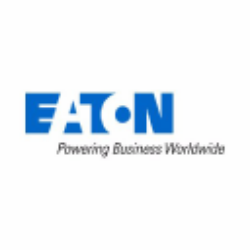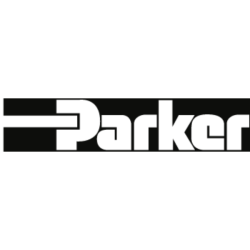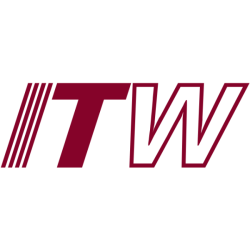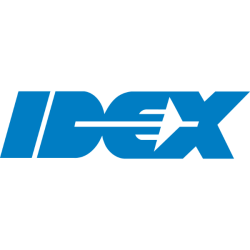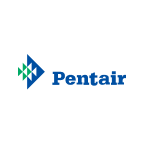GNRC
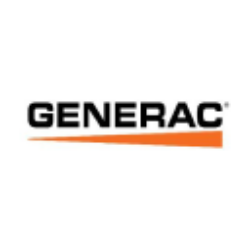
Generac Holdings Inc.
GNRC
(1.2)159,55 USD
8.28% ROA
12.33% ROE
42.88x PER
10.292.126.970,00 USD
62.46% DER
0% Yield
7.09% NPM
Generac Holdings Inc. Stock Analysis
Generac Holdings Inc. Fundamental Analysis
Fundamental analysis in stock investing is like studying the foundation of a house before buying it. It involves looking at a company's financial health, like its earnings, assets, and debts, to determine if it's a good investment based on its fundamental strength and potential for growth.
| # | Analysis | Rating |
|---|---|---|
| 1 |
ROE
The stock's ROE falls within an average range (8.06%), demonstrating satisfactory profitability and efficiency in utilizing shareholders' equity. |
|
| 2 |
ROA
The stock's ROA (6.55%) shows that it's doing a pretty good job at making money from its assets, making it a solid choice to invest and earn steady profits. |
|
| 3 |
PBV
The stock's PBV ratio (2.96x) reflects a fair valuation, making it an attractive option for investors seeking balanced opportunities. |
|
| 4 |
DER
The stock has a reasonable amount of debt compared to its ownership (73%), suggesting a balanced financial position and a moderate level of risk. |
|
| 5 |
Buffet Intrinsic Value
The company's stock shows potential as it is undervalued (2.569) according to Warren Buffett's formula, indicating that its intrinsic value exceeds the market price. |
|
| 6 |
Revenue Growth
Company's revenue has stayed stagnant, showing no signs of improvement and making it a less favorable choice. |
|
| 7 |
Net Profit Growth
Over the past five years, this company's net profit has failed to exhibit any growth, indicating a stagnant financial performance and making it a less favorable choice for potential investors. |
|
| 8 |
Assets Growth
Company's revenue has stayed stagnant, showing no signs of improvement and making it a less favorable choice. |
|
| 9 |
Graham Number
The Graham number of this company suggests that its stock price may be overvalued, indicating a less favorable investment opportunity. |
|
| 10 |
Dividend Growth
The company's dividend growth has remained flat for the past three years, offering no indication of improved returns and making it a less advantageous investment opportunity. |
|
| 11 |
Dividend
Investors should be cautious as the company hasn't distributed dividends in the last three years, possibly indicating financial challenges. |
Generac Holdings Inc. Technical Analysis
Technical analysis in stock investing is like reading the patterns on a weather map to predict future weather conditions. It involves studying past stock price movements and trading volumes to make predictions about where a stock's price might go next, without necessarily looking at the company's financial health.
| # | Analysis | Recommendation |
|---|---|---|
| 1 | Awesome Oscillator | Buy |
| 2 | MACD | Buy |
| 3 | RSI | Hold |
| 4 | Stoch RSI | Sell |
Generac Holdings Inc. Price Chart
Financial Statements
Financial statements are like report cards for companies. They show how much money a company makes (income statement), what it owns and owes (balance sheet), and where it spends its money (cash flow statement), helping stock investors understand if a company is healthy and worth investing in.
Income Statements
An income statement for a company is like a scoreboard for its profits and losses. It shows how much money the company made (revenue) and how much it spent to make that money (expenses), helping stock investors see if a company is making a profit or not.
Revenue in stock investing is the total amount of money a company earns from its sales, and it's a key factor that investors consider to assess a company's financial performance and growth potential.
| Year | Revenue | Growth |
|---|---|---|
| 2007 | 555.705.000 | |
| 2008 | 574.229.000 | 3.23% |
| 2009 | 588.248.000 | 2.38% |
| 2010 | 592.880.000 | 0.78% |
| 2011 | 791.976.000 | 25.14% |
| 2012 | 1.176.306.000 | 32.67% |
| 2013 | 1.485.765.000 | 20.83% |
| 2014 | 1.460.919.000 | -1.7% |
| 2015 | 1.317.299.000 | -10.9% |
| 2016 | 1.444.453.000 | 8.8% |
| 2017 | 1.672.445.000 | 13.63% |
| 2018 | 2.023.464.000 | 17.35% |
| 2019 | 2.204.336.000 | 8.21% |
| 2020 | 2.485.200.000 | 11.3% |
| 2021 | 3.737.184.000 | 33.5% |
| 2022 | 4.564.737.000 | 18.13% |
| 2023 | 4.282.668.000 | -6.59% |
| 2023 | 4.022.667.000 | -6.46% |
| 2024 | 3.992.788.000 | -0.75% |
Research and Development Expenses are the costs a company incurs to create and improve its products or services, which can be important for investors to evaluate a company's innovation and potential for future growth.
| Year | Research and Development Expenses | Growth |
|---|---|---|
| 2007 | 9.606.000 | |
| 2008 | 9.925.000 | 3.21% |
| 2009 | 10.842.000 | 8.46% |
| 2010 | 14.700.000 | 26.24% |
| 2011 | 16.476.000 | 10.78% |
| 2012 | 23.499.000 | 29.89% |
| 2013 | 29.271.000 | 19.72% |
| 2014 | 31.494.000 | 7.06% |
| 2015 | 32.922.000 | 4.34% |
| 2016 | 37.229.000 | 11.57% |
| 2017 | 42.925.000 | 13.27% |
| 2018 | 50.019.000 | 14.18% |
| 2019 | 68.394.000 | 26.87% |
| 2020 | 80.251.000 | 14.77% |
| 2021 | 104.303.000 | 23.06% |
| 2022 | 159.774.000 | 34.72% |
| 2023 | 173.248.000 | 7.78% |
| 2023 | 173.443.000 | 0.11% |
| 2024 | 215.984.000 | 19.7% |
General and Administrative Expenses are the costs a company incurs to run its day-to-day operations, such as office rent, salaries, and utilities, which investors consider to understand a company's overall efficiency and management effectiveness.
| Year | General and Administrative Expenses | Growth |
|---|---|---|
| 2007 | 17.581.000 | |
| 2008 | 15.869.000 | -10.79% |
| 2009 | 14.713.000 | -7.86% |
| 2010 | 22.599.000 | 34.9% |
| 2011 | 30.012.000 | 24.7% |
| 2012 | 46.031.000 | 34.8% |
| 2013 | 55.490.000 | 17.05% |
| 2014 | 54.795.000 | -1.27% |
| 2015 | 52.947.000 | -3.49% |
| 2016 | 74.700.000 | 29.12% |
| 2017 | 87.512.000 | 14.64% |
| 2018 | 103.841.000 | 15.73% |
| 2019 | 110.868.000 | 6.34% |
| 2020 | 119.644.000 | 7.34% |
| 2021 | 144.272.000 | 17.07% |
| 2022 | 194.861.000 | 25.96% |
| 2023 | 332.208.000 | 41.34% |
| 2023 | 252.936.000 | -31.34% |
| 2024 | 261.544.000 | 3.29% |
EBITDA stands for Earnings Before Interest, Taxes, Depreciation, and Amortization. It is a measure that helps stock investors analyze a company's profitability by looking at its earnings without considering certain expenses. This helps to get a clearer picture of the company's financial performance and its ability to generate cash flow.
| Year | EBITDA | Growth |
|---|---|---|
| 2007 | 168.864.000 | |
| 2008 | -392.763.000 | 142.99% |
| 2009 | 173.931.000 | 325.82% |
| 2010 | 144.057.000 | -20.74% |
| 2011 | 166.807.000 | 13.64% |
| 2012 | 257.544.000 | 35.23% |
| 2013 | 388.239.000 | 33.66% |
| 2014 | 323.228.000 | -20.11% |
| 2015 | 260.581.000 | -24.04% |
| 2016 | 264.070.000 | 1.32% |
| 2017 | 302.622.000 | 12.74% |
| 2018 | 404.589.000 | 25.2% |
| 2019 | 434.923.000 | 6.97% |
| 2020 | 549.290.000 | 20.82% |
| 2021 | 834.642.000 | 34.19% |
| 2022 | 723.930.000 | -15.29% |
| 2023 | 586.240.000 | -23.49% |
| 2023 | 553.261.000 | -5.96% |
| 2024 | 589.020.000 | 6.07% |
Gross profit is the money a company makes from selling its products or services after subtracting the cost of producing or providing them, and it is an important measure for investors to understand a company's profitability.
| Year | Gross Profit | Growth |
|---|---|---|
| 2007 | 222.277.000 | |
| 2008 | 202.030.000 | -10.02% |
| 2009 | 235.850.000 | 14.34% |
| 2010 | 237.357.000 | 0.63% |
| 2011 | 294.654.000 | 19.45% |
| 2012 | 440.400.000 | 33.09% |
| 2013 | 569.560.000 | 22.68% |
| 2014 | 516.219.000 | -10.33% |
| 2015 | 459.950.000 | -12.23% |
| 2016 | 514.106.000 | 10.53% |
| 2017 | 582.117.000 | 11.68% |
| 2018 | 725.040.000 | 19.71% |
| 2019 | 797.752.000 | 9.11% |
| 2020 | 957.654.000 | 16.7% |
| 2021 | 1.360.082.000 | 29.59% |
| 2022 | 1.522.004.000 | 10.64% |
| 2023 | 1.503.148.000 | -1.25% |
| 2023 | 1.365.431.000 | -10.09% |
| 2024 | 1.403.080.000 | 2.68% |
Net income in stock investing is like the money a company actually gets to keep as profit after paying all its bills, and it's an important measure to understand how well a company is doing financially.
| Year | Net Profit | Growth |
|---|---|---|
| 2007 | -9.714.000 | |
| 2008 | -555.955.000 | 98.25% |
| 2009 | 43.055.000 | 1391.27% |
| 2010 | 56.913.000 | 24.35% |
| 2011 | 324.643.000 | 82.47% |
| 2012 | 93.223.000 | -248.24% |
| 2013 | 174.539.000 | 46.59% |
| 2014 | 174.613.000 | 0.04% |
| 2015 | 77.747.000 | -124.59% |
| 2016 | 98.788.000 | 21.3% |
| 2017 | 159.386.000 | 38.02% |
| 2018 | 238.257.000 | 33.1% |
| 2019 | 253.260.000 | 5.92% |
| 2020 | 349.329.000 | 27.5% |
| 2021 | 533.392.000 | 34.51% |
| 2022 | 350.267.000 | -52.28% |
| 2023 | 241.508.000 | -45.03% |
| 2023 | 203.089.000 | -18.92% |
| 2024 | 236.460.000 | 14.11% |
EPS, or earnings per share, is a measure that shows how much profit a company has earned for each outstanding share of its stock, and it is important for stock investors as it helps understand the profitability of a company and compare it with other companies in the market.
| Year | Earning per Share (EPS) | Growth |
|---|---|---|
| 2007 | 0 | |
| 2008 | -28 | 100% |
| 2009 | -4 | -800% |
| 2010 | -2 | -200% |
| 2011 | 5 | 125% |
| 2012 | 1 | -300% |
| 2013 | 3 | 50% |
| 2014 | 3 | 0% |
| 2015 | 1 | -100% |
| 2016 | 2 | 0% |
| 2017 | 3 | 50% |
| 2018 | 4 | 33.33% |
| 2019 | 4 | 25% |
| 2020 | 6 | 20% |
| 2021 | 9 | 37.5% |
| 2022 | 6 | -60% |
| 2023 | 4 | -66.67% |
| 2023 | 3 | 0% |
| 2024 | 4 | 0% |
Cashflow Statements
Cashflow statements show the movement of money in and out of a company, helping stock investors understand how much money a company makes and spends. By examining cashflow statements, investors can assess if a company is generating enough cash to pay its bills, invest in growth, and provide returns to stockholders.
Free cash flow is the leftover cash that a company generates after covering its operating expenses and capital expenditures, which is important for stock investors as it shows how much money a company has available to invest in growth, pay dividends, or reduce debt.
| Year | Free Cashflow | Growth |
|---|---|---|
| 2007 | 25.322.000 | |
| 2008 | 5.039.000 | -402.52% |
| 2009 | 70.082.000 | 92.81% |
| 2010 | 104.850.000 | 33.16% |
| 2011 | 157.652.000 | 33.49% |
| 2012 | 213.202.000 | 26.06% |
| 2013 | 229.174.000 | 6.97% |
| 2014 | 218.297.000 | -4.98% |
| 2015 | 157.968.000 | -38.19% |
| 2016 | 222.942.000 | 29.14% |
| 2017 | 227.855.000 | 2.16% |
| 2018 | 199.626.000 | -14.14% |
| 2019 | 248.085.000 | 19.53% |
| 2020 | 424.405.000 | 41.55% |
| 2021 | 301.164.000 | -40.92% |
| 2022 | -27.672.000 | 1188.33% |
| 2023 | 360.017.999 | 107.69% |
| 2023 | 116.318.000 | -209.51% |
| 2024 | 49.712.000 | -133.98% |
Operating cash flow represents the cash generated or consumed by a company's day-to-day operations, excluding external investing or financing activities, and is crucial for stock investors as it shows how much cash a company is generating from its core business operations.
| Year | Operating Cashflow | Growth |
|---|---|---|
| 2007 | 38.513.000 | |
| 2008 | 10.225.000 | -276.66% |
| 2009 | 74.607.000 | 86.29% |
| 2010 | 114.481.000 | 34.83% |
| 2011 | 169.712.000 | 32.54% |
| 2012 | 235.594.000 | 27.96% |
| 2013 | 259.944.000 | 9.37% |
| 2014 | 252.986.000 | -2.75% |
| 2015 | 188.619.000 | -34.13% |
| 2016 | 253.409.000 | 25.57% |
| 2017 | 261.116.000 | 2.95% |
| 2018 | 247.227.000 | -5.62% |
| 2019 | 308.887.000 | 19.96% |
| 2020 | 486.533.000 | 36.51% |
| 2021 | 411.156.000 | -18.33% |
| 2022 | 58.516.000 | -602.64% |
| 2023 | 521.669.999 | 88.78% |
| 2023 | 140.136.000 | -272.26% |
| 2024 | 77.664.000 | -80.44% |
Capex, short for capital expenditures, refers to the money a company spends on acquiring or upgrading tangible assets like buildings, equipment, or technology, which is important for stock investors as it indicates how much a company is investing in its infrastructure to support future growth and profitability.
| Year | Capital Expenditure | Growth |
|---|---|---|
| 2007 | 13.191.000 | |
| 2008 | 5.186.000 | -154.36% |
| 2009 | 4.525.000 | -14.61% |
| 2010 | 9.631.000 | 53.02% |
| 2011 | 12.060.000 | 20.14% |
| 2012 | 22.392.000 | 46.14% |
| 2013 | 30.770.000 | 27.23% |
| 2014 | 34.689.000 | 11.3% |
| 2015 | 30.651.000 | -13.17% |
| 2016 | 30.467.000 | -0.6% |
| 2017 | 33.261.000 | 8.4% |
| 2018 | 47.601.000 | 30.13% |
| 2019 | 60.802.000 | 21.71% |
| 2020 | 62.128.000 | 2.13% |
| 2021 | 109.992.000 | 43.52% |
| 2022 | 86.188.000 | -27.62% |
| 2023 | 161.652.000 | 46.68% |
| 2023 | 23.818.000 | -578.7% |
| 2024 | 27.952.000 | 14.79% |
Balance Sheet
Balance sheets provide a snapshot of a company's financial health and its assets (such as cash, inventory, and property) and liabilities (like debts and obligations) at a specific point in time. For stock investors, balance sheets help assess the company's overall worth and evaluate its ability to meet financial obligations and support future growth.
Equity refers to the ownership interest or stake that shareholders have in a company, representing their claim on its assets and earnings after all debts and liabilities are paid.
| Year | Equity | Growth |
|---|---|---|
| 2007 | -241.290.000 | |
| 2008 | -810.194.000 | 70.22% |
| 2009 | -742.814.000 | -9.07% |
| 2010 | 441.067.000 | 268.41% |
| 2011 | 768.889.000 | 42.64% |
| 2012 | 463.628.000 | -65.84% |
| 2013 | 317.071.000 | -46.22% |
| 2014 | 489.799.000 | 35.27% |
| 2015 | 465.871.000 | -5.14% |
| 2016 | 434.250.000 | -7.28% |
| 2017 | 603.760.000 | 28.08% |
| 2018 | 822.265.000 | 26.57% |
| 2019 | 1.094.078.000 | 24.84% |
| 2020 | 1.456.411.000 | 24.88% |
| 2021 | 2.272.137.000 | 35.9% |
| 2022 | 2.369.726.000 | 4.12% |
| 2023 | 2.372.126.000 | 0.1% |
| 2023 | 2.349.619.000 | -0.96% |
| 2024 | 2.372.519.000 | 0.97% |
Assets represent the valuable resources that a company owns, such as cash, inventory, property, and equipment, and understanding a company's assets helps investors assess its value and potential for generating future profits.
| Year | Assets | Growth |
|---|---|---|
| 2007 | 1.908.659.000 | |
| 2008 | 1.326.214.000 | -43.92% |
| 2009 | 1.337.243.000 | 0.82% |
| 2010 | 1.209.883.000 | -10.53% |
| 2011 | 1.552.793.000 | 22.08% |
| 2012 | 1.603.847.000 | 3.18% |
| 2013 | 1.798.205.000 | 10.81% |
| 2014 | 1.892.343.000 | 4.97% |
| 2015 | 1.792.816.000 | -5.55% |
| 2016 | 1.861.684.000 | 3.7% |
| 2017 | 2.019.964.000 | 7.84% |
| 2018 | 2.426.314.000 | 16.75% |
| 2019 | 2.665.669.000 | 8.98% |
| 2020 | 3.235.423.000 | 17.61% |
| 2021 | 4.877.780.000 | 33.67% |
| 2022 | 5.169.462.000 | 5.64% |
| 2023 | 5.166.341.000 | -0.06% |
| 2023 | 5.093.312.000 | -1.43% |
| 2024 | 5.118.566.000 | 0.49% |
Liabilities refer to the financial obligations or debts that a company owes to creditors or external parties, and understanding a company's liabilities is important for investors as it helps assess the company's financial risk and ability to meet its obligations.
| Year | Liabilities | Growth |
|---|---|---|
| 2007 | 2.149.949.000 | |
| 2008 | 2.136.408.000 | -0.63% |
| 2009 | 2.080.057.000 | -2.71% |
| 2010 | 768.816.000 | -170.55% |
| 2011 | 783.904.000 | 1.92% |
| 2012 | 676.591.000 | -15.86% |
| 2013 | 1.164.063.000 | 41.88% |
| 2014 | 912.745.000 | -27.53% |
| 2015 | 861.074.000 | -6% |
| 2016 | 1.427.434.000 | 39.68% |
| 2017 | 1.416.204.000 | -0.79% |
| 2018 | 1.604.049.000 | 11.71% |
| 2019 | 1.571.591.000 | -2.07% |
| 2020 | 1.779.012.000 | 11.66% |
| 2021 | 2.605.643.000 | 31.72% |
| 2022 | 2.799.736.000 | 6.93% |
| 2023 | 2.794.215.000 | -0.2% |
| 2023 | 2.743.693.000 | -1.84% |
| 2024 | 2.746.047.000 | 0.09% |
Generac Holdings Inc. Financial Ratio (TTM)
Valuation Metrics
- Revenue per Share
- 67.16
- Net Income per Share
- 3.99
- Price to Earning Ratio
- 42.88x
- Price To Sales Ratio
- 2.56x
- POCF Ratio
- 15.84
- PFCF Ratio
- 21.26
- Price to Book Ratio
- 4.32
- EV to Sales
- 2.89
- EV Over EBITDA
- 21
- EV to Operating CashFlow
- 17.99
- EV to FreeCashFlow
- 24.03
- Earnings Yield
- 0.02
- FreeCashFlow Yield
- 0.05
- Market Cap
- 10,29 Bil.
- Enterprise Value
- 11,64 Bil.
- Graham Number
- 59.61
- Graham NetNet
- -24.95
Income Statement Metrics
- Net Income per Share
- 3.99
- Income Quality
- 2.67
- ROE
- 0.1
- Return On Assets
- 0.06
- Return On Capital Employed
- 0.12
- Net Income per EBT
- 0.75
- EBT Per Ebit
- 0.8
- Ebit per Revenue
- 0.12
- Effective Tax Rate
- 0.24
Margins
- Sales, General, & Administrative to Revenue
- 0.07
- Research & Developement to Revenue
- 0.05
- Stock Based Compensation to Revenue
- 0.01
- Gross Profit Margin
- 0.36
- Operating Profit Margin
- 0.12
- Pretax Profit Margin
- 0.09
- Net Profit Margin
- 0.07
Dividends
- Dividend Yield
- 0
- Dividend Yield %
- 0
- Payout Ratio
- 0
- Dividend Per Share
- 0
Operating Metrics
- Operating Cashflow per Share
- 10.8
- Free CashFlow per Share
- 8.08
- Capex to Operating CashFlow
- 0.25
- Capex to Revenue
- 0.04
- Capex to Depreciation
- 0.95
- Return on Invested Capital
- 0.08
- Return on Tangible Assets
- 0.08
- Days Sales Outstanding
- 55.39
- Days Payables Outstanding
- 56.7
- Days of Inventory on Hand
- 160.79
- Receivables Turnover
- 6.59
- Payables Turnover
- 6.44
- Inventory Turnover
- 2.27
- Capex per Share
- 2.71
Balance Sheet
- Cash per Share
- 3,65
- Book Value per Share
- 39,62
- Tangible Book Value per Share
- 2.35
- Shareholders Equity per Share
- 39.57
- Interest Debt per Share
- 25.54
- Debt to Equity
- 0.62
- Debt to Assets
- 0.29
- Net Debt to EBITDA
- 2.42
- Current Ratio
- 2.25
- Tangible Asset Value
- 0,14 Bil.
- Net Current Asset Value
- -0,69 Bil.
- Invested Capital
- 3998042000
- Working Capital
- 1,14 Bil.
- Intangibles to Total Assets
- 0.44
- Average Receivables
- 0,57 Bil.
- Average Payables
- 0,39 Bil.
- Average Inventory
- 1167241500
- Debt to Market Cap
- 0.14
Dividends
Dividends in stock investing are like rewards that companies give to their shareholders. They are a portion of the company's profits distributed to investors, typically in the form of cash payments, as a way for them to share in the company's success.
| Year | Dividends | Growth |
|---|---|---|
| 2012 | 6 | |
| 2013 | 5 | -20% |
Generac Holdings Inc. Profile
About Generac Holdings Inc.
Generac Holdings Inc. designs, manufactures, and sells power generation equipment, energy storage systems, and other power products for the residential, and light commercial and industrial markets worldwide. The company offers engines, alternators, batteries, electronic controls, steel enclosures, and other components. It also provides residential automatic standby generators ranging in output from 7.5kW to 150kW; air-cooled engine residential standby generators ranging from 7.5kW to 26kW; liquid-cooled engine generators with outputs ranging from 22kW to 150kW; and Mobile Link, a remote monitoring system for home standby generators. In addition, the company offers various portable generators ranging in size from 800W to 17.5kW; outdoor power equipment, such as trimmers, field and brush mowers, log splitters, stump grinders, chipper shredders, lawn and leaf vacuums, pressure washers, and water pumps; and clean energy solution under the PWRcell and PWRview brands. Further, it provides light towers, mobile generators, and mobile energy storage systems; commercial mobile pumps and dust-suppression equipment; various gaseous-engine control systems and accessories; light-commercial standby generators ranging from 22kW to 150kW and related transfer switches providing three-phase power for small and mid-sized businesses; and industrial generators ranging in output from 10kW to 3,250kW used as emergency backup for healthcare, telecom, datacom, commercial office, retail, municipal, and manufacturing markets. Additionally, the company sells aftermarket service parts and product accessories to dealers. It distributes its products through independent residential dealers, industrial distributors and dealers, national and regional retailers, e-commerce partners, electrical, HVAC and solar wholesalers, catalogs, equipment rental companies and distributors, and solar installers; and directly to end users. The company was founded in 1959 and is headquartered in Waukesha, Wisconsin.
- CEO
- Mr. Aaron P. Jagdfeld
- Employee
- 8.315
- Address
-
S45 W29290 Highway 59
Waukesha, 53189
Generac Holdings Inc. Executives & BODs
| # | Name | Age |
|---|---|---|
| 1 |
Ms. Amanda Teder Chief Marketing Officer |
70 |
| 2 |
Mr. Norman P. Taffe President of Energy Technology |
70 |
| 3 |
Mr. Talal Butt Chief Information Officer |
70 |
| 4 |
Kris Rosemann Senior Manager - Corporate Development & Investor Relations |
70 |
| 5 |
Mr. York A. Ragen Chief Financial Officer |
70 |
| 6 |
Mr. Kyle Andrew Raabe President of Consumer Power |
70 |
| 7 |
Ms. Rhonda Matschke Executive Vice President of Human Resources |
70 |
| 8 |
Mr. Aaron P. Jagdfeld Chairman, President & Chief Executive Officer |
70 |
| 9 |
Mr. Erik Wilde Executive Vice President of Industrial Americas |
70 |
| 10 |
Mr. Rajendra Kumar Kanuru J.D. Executive Vice President, General Counsel & Secretary |
70 |

